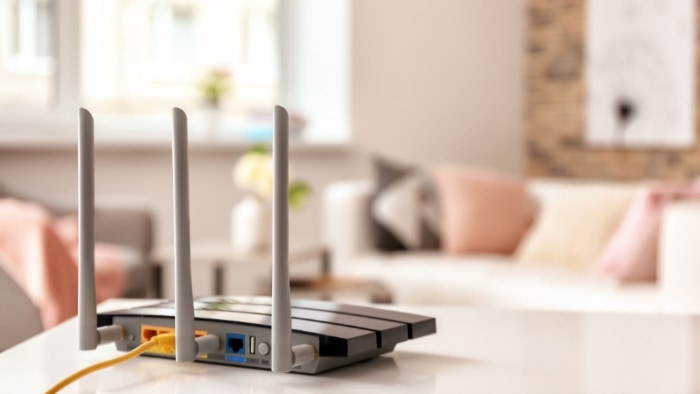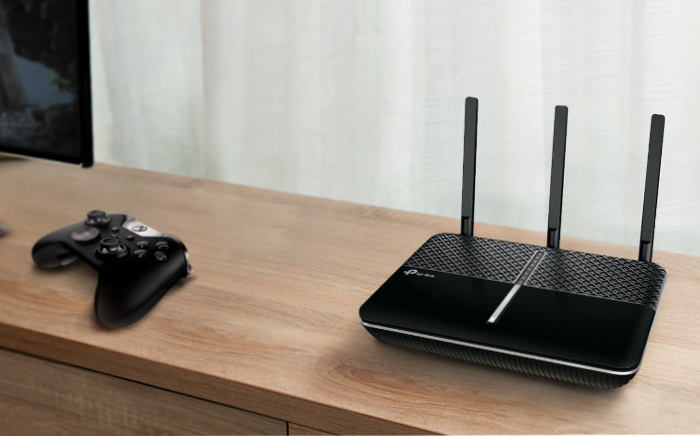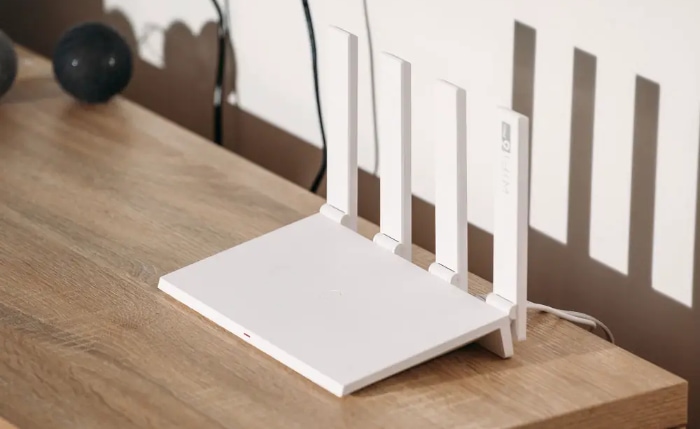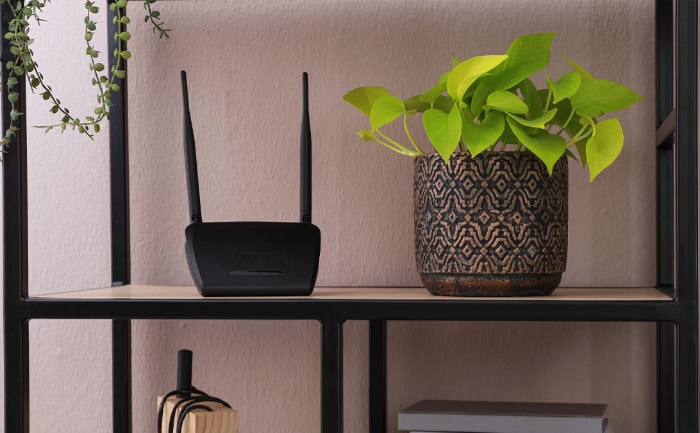How Long Do Routers Last? 5 Signs You Need a New One

Your home’s router is the central command for your entire network, silently managing everything from video calls to movie streaming. Like any hardworking piece of electronics, it doesn't last forever, and figuring out when to get a new one involves more than just waiting for it to stop working.
A router’s effective life is often cut short not by hardware failure, but by the rapid pace of technological progress that leaves it outdated. For this reason, a good rule of thumb is to plan on replacing your router every three to five years.
This simple habit ensures your home network stays fast, stable, and secure as your digital needs grow.
The Typical Lifespan of a Home Router
Routers play a central part in keeping your home connected, yet they do not last forever. Before a device completely fails, changing technology and daily wear can quietly shorten its usefulness.
Several factors work together to determine how long your router remains reliable, from the quality of its construction to the demands of your household network.
Average Lifespan
Most consumer-grade routers are designed with a lifespan of about three to five years. Over time, everyday use and gradual changes in network needs mean that reliability and speed can drop off.
High-end business routers, built using more robust components, can sometimes operate longer than those designed for typical home use. Manufacturers of enterprise-grade models use better circuitry and cooling solutions, which help these devices withstand practical wear more effectively.
Still, technological advancements continuously push expectations higher for both types, eventually making older routers less practical compared to newer models.
Hardware Degradation
Inside every router, the electronics are under constant strain. Small components such as capacitors are particularly vulnerable to heat buildup, which naturally increases as the router manages more connections or is placed in a poorly ventilated spot.
Over time, exposure to heat speeds up the aging of these parts, making them prone to instability and even total failure. Symptoms like sudden disconnections or a router that’s hot to the touch often point to deteriorating hardware.
Even if the device seems to work, degraded components can slowly erode performance and reliability.
Technological Obsolescence
More often than not, a router’s end of life is marked by outdated technology rather than physical failure. Wi-Fi standards can shift rapidly, and newer speeds, broader bandwidths, and advanced features such as better security protocols emerge every few years.
A router that was purchased only a few years ago may lack support for newer Wi-Fi generations or struggle to handle many modern devices at once. As streaming, smart home gadgets, and gaming continue to demand faster connections and increased network stability, the need to replace older routers becomes a matter of keeping up with current technology rather than waiting for hardware breakdown.
Factors That Influence Router Longevity

A router's effective lifespan is not set in stone. Its durability is shaped by how you use it, where you place it, and the ongoing support it receives from its creator.
A combination of intense network demand, poor placement, and a lack of software updates can significantly reduce how long a router performs well, pushing you toward an upgrade sooner than expected.
Usage and Workload
The amount of traffic on your network directly affects your router's internal components. A household with multiple people simultaneously streaming 4K video, engaging in competitive online gaming, and running numerous smart home devices places a heavy workload on the router.
All this activity forces the processor and other electronics to work harder, which in turn generates more heat. Constant high temperatures and stress can accelerate the wear on internal parts, potentially leading to instability and a shorter operational life for the device.
Environmental Conditions
The physical environment where a router operates plays a significant part in its durability. Proper ventilation is critical; placing a router in a confined space like a cabinet or behind other electronics can trap heat and lead to overheating.
Dust is another common problem, as it can accumulate in the vents, blocking airflow and insulating internal components, which further raises temperatures. Similarly, high humidity can cause moisture to form on the sensitive circuitry inside, creating a risk of corrosion and short circuits that can permanently damage the device.
Manufacturer Support
A router's software, or firmware, is just as important as its hardware. Manufacturers release firmware updates to patch security holes, fix bugs, and improve overall performance.
However, companies eventually stop supporting older models, a point known as “end-of-life.” Once a router no longer receives these critical updates, it becomes a major security risk.
New vulnerabilities discovered by hackers will go unpatched, leaving your entire home network exposed to potential attacks. A lack of support also means the router's performance will stagnate, unable to adapt to new network demands.
Signs It's Time for a Router Upgrade

A router rarely fails suddenly. Instead, it usually shows a gradual decline, offering several warning signs that its hardware is aging or its technology has become outdated.
Recognizing these clues can help you decide when to replace your device before a complete failure disrupts your entire home network. From slower speeds to stability issues, these symptoms indicate your router is no longer up to the task.
Performance Degradation
One of the most obvious signs your router is struggling is a noticeable drop in Wi-Fi speed. If you are paying for a high-speed internet plan but your wireless devices are consistently slower than expected, your router may be the bottleneck.
Another clear indicator is frequent and random disconnections. When multiple devices lose their connection to the network for no apparent reason, forcing you to wait for it to come back, the router's ability to manage traffic is likely compromised.
Such interruptions can disrupt everything from work calls to movie nights.
Hardware and Stability Issues
If you find yourself power-cycling your router more and more often just to get a stable connection, its internal components are probably beginning to fail. A healthy router should operate for months without needing a reboot, so a frequent need for resets points to underlying hardware or software problems.
You should also pay attention to its physical temperature. While it is normal for a router to feel slightly warm, a casing that is unusually hot to the touch signals that the device is overheating.
Chronic overheating can damage sensitive electronics and is a strong warning of impending hardware failure.
Connectivity and Range Problems
A decline in your Wi-Fi coverage is another telltale sign of an aging router. You might start to notice new dead zones or areas in your home where the signal used to be strong but is now consistently weak or unavailable.
This often suggests the router’s internal antennas or radio components are wearing out. Furthermore, you may run into trouble connecting new gadgets to your network.
An older router might not be able to assign an IP address to a new device or may struggle with the latest connectivity standards, effectively preventing you from expanding your smart home setup.
The Impact of Outdated Wi-Fi Technology

Using a router with obsolete technology can undermine your entire home network experience, even if the device seems to be working correctly. Wi-Fi standards advance quickly, and clinging to an older model can create performance bottlenecks, security risks, and frustrating limitations that prevent you from getting the most out of your internet connection and modern devices.
Internet Speed Bottlenecks
Internet service providers are now widely offering plans with gigabit speeds, but you can only enjoy that performance if your router can support it. An older router operating on a standard like Wi-Fi 4 or Wi-Fi 5 has a maximum speed that is far below what modern internet plans can deliver.
Your router acts as the gateway to the internet, and if its capabilities are limited, it creates a bottleneck. You may be paying for an ultra-fast connection, but your router’s outdated technology will prevent those speeds from ever reaching your wireless devices.
Inefficient Device Handling
The typical home network today is crowded with a wide array of connected gadgets, from laptops and smartphones to smart speakers, televisions, and security cameras. Older routers were not designed to manage so many simultaneous connections.
They often struggle to distribute bandwidth fairly, leading to lag, buffering, and instability as devices compete for attention. Newer standards such as Wi-Fi 6 were created specifically to solve this problem.
They incorporate technologies that allow the router to communicate with many devices more efficiently, ensuring a smoother experience for everyone on the network even in a busy smart home.
Security Vulnerabilities
Perhaps the most critical drawback of an old router is its weakness against modern security threats. Outdated routers may not support the latest security protocols, such as WPA3, which provides stronger encryption and better protection against hacking attempts.
More importantly, manufacturers eventually stop providing firmware updates for their older products. Once a router stops receiving these patches, any newly discovered security flaws will go unfixed.
Continuing to use an unsupported router leaves your network and all the personal data on it exposed and vulnerable to attack.
How to Extend Your Router's Lifespan

While every router will eventually need to be replaced, you can take several simple steps to maximize its performance and potentially delay an upgrade. A few proactive habits related to its placement, maintenance, and electrical protection can help your device run cooler, more securely, and more reliably for as long as possible.
Ensure Proper Placement
Where you place your router has a major effect on both its performance and durability. For the best results, position the device in a central, open, and elevated location.
This helps the Wi-Fi signal travel more freely throughout your home, reducing dead zones. Just as important, this placement ensures good airflow around the device.
Keeping it away from direct sunlight, other heat-producing electronics, and out of enclosed cabinets prevents it from overheating, which is a primary cause of premature hardware failure.
Perform Regular Maintenance
Simple, consistent maintenance can keep your router running smoothly. One of the most important tasks is to keep its firmware updated.
Manufacturers release these updates to patch security holes and improve performance, so installing them as soon as they are available is crucial for a safe and efficient network. It is also a good practice to reboot your router periodically, perhaps once a month.
A simple restart clears the device's memory and can resolve minor glitches that cause slowdowns or instability, restoring its performance without much effort.
Protect from Power Surges
A router's internal circuitry is sensitive and can be easily damaged by unexpected electrical fluctuations. Power surges, brownouts, or even small spikes from the electrical grid can permanently harm these components, leading to immediate failure or intermittent problems that are hard to diagnose.
To guard against this, you should always plug your router and modem into a quality surge protector, not directly into a wall outlet. A surge protector acts as a buffer, absorbing harmful voltage spikes and shielding your equipment's delicate electronics from damage.
Conclusion
A router’s effective lifespan is best measured at three to five years, a window defined by both the physical breakdown of its components and the forward momentum of technology. Recognizing the symptoms of an aging or obsolete router, from declining speeds to stability issues, is the best way to maintain a dependable and secure home network.
For this reason, upgrading your router should be seen as a strategic investment in your connected life. It is not just about replacing something that broke, but about ensuring your network remains capable of supporting your modern needs for speed and security.


